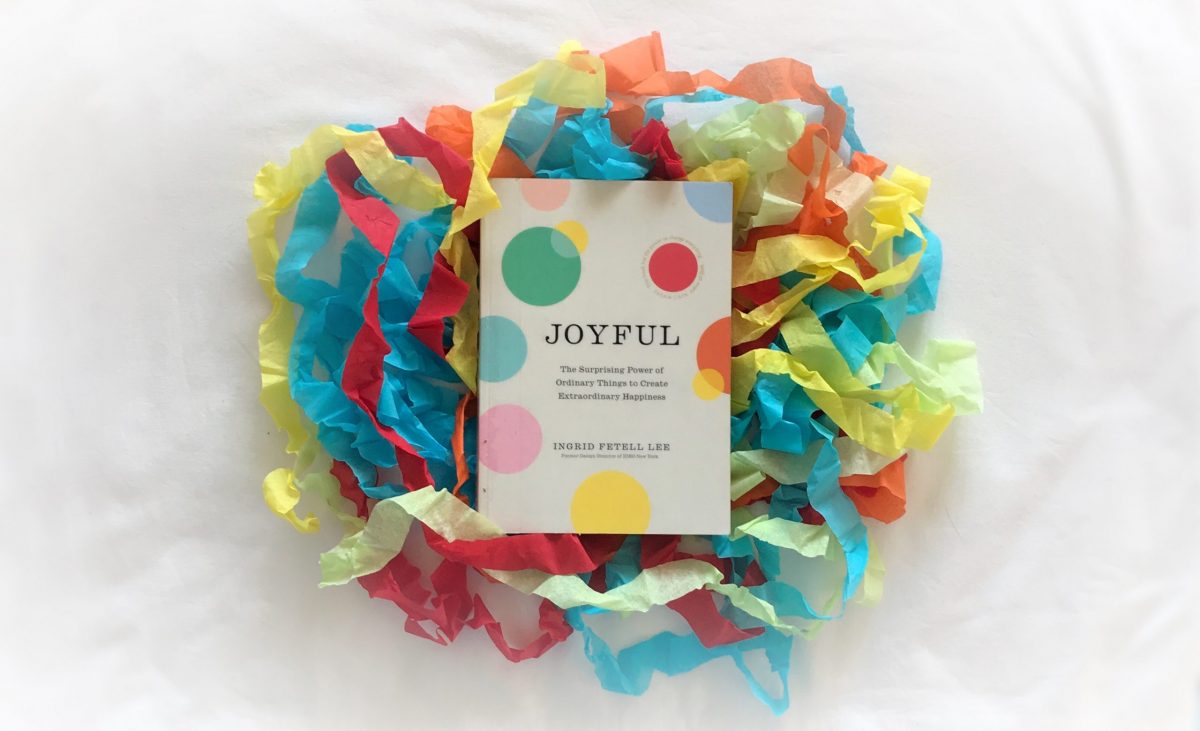What brings you joy?
I’ve been pondering this question a lot lately.
With most of my energy going into keeping on top of the latest pandemic news, restrictions, economic forecasts and memes of the moment, I’ve had very little left in the tank for positive emotion let alone the life-affirming exuberance of joy.
Joy, happiness, pleasure. Each brings positivity into my life but it’s joy that taps into something more – almost like there is a perfection in the world. There may be grief, pain, suffering, injustice but all is in flow for change. Everything is in harmony. It’s a bit of a challenge to talk about joy without reference to the divine – as the word is seeped in the traditions of religion and spirituality – but joy is a human experience. Secular appreciation and understanding is possible.
In an attempt to bring a little bit of joy back into my life, I started reading Joyful: The Surprising Power of Ordinary Things to Create Extraordinary Happiness by designer, Ingrid Fetell Lee. Lee explores what it is about our environment that brings joy. How do physical objects elicit positive emotions?
“The first moment of genuine joy is the moment of commitment to the human experience. Joy is what makes us human. When we deny that, when we push joy off to the margins, when we say it’s extraneous, or it’s a luxury, we lose a piece of our humanity.”
Ingrid Fetell Lee
While conventional wisdom may tell us that we need to look inside ourselves to find joy, Lee kept seeing evidence of people experiencing joy through their surroundings. You don’t need to spend years navel-gazing to have joy in your life. Joy isn’t hard to find. It’s actually all around us.
So Lee began asking people around her what objects or places they associated with joy. As her pinboard of joyful experiences expanded, certain attributes began to emerge.

Lee identified ten aesthetics of joy:
- Energy – vibrant colour and light
- Abundance – lushness, multiplicity and variety
- Freedom – nature, wildness and open space
- Harmony – balance, symmetry and flow
- Play – circles, spheres and bubbly forms
- Surprise – contrast and whimsy
- Transcendence – elevation and lightness
- Magic – invisible forces and illusions
- Celebration – synchrony, sparkle and bursting shapes
- Renewal – blossoming, expansion and curves
Joyful is like a peek-a-boo meander in the land of joy. It really does feel like you’re travelling the world with Lee as she shares an abundance of examples of joy. I was constantly looking up the houses, art, designers, and events she mentions (most were new to me). The playful joy that abounds in the Reversible Destiny Lofts of Gins and Arakawa and the giant balloons of Jihan Zencirli; the joy of renewal in the curves of Eva Zeisel’s designs and blossom watching picnics in Japan. Joy abounds.



Joy is good for our productivity, cognitive flexibility, strengthening our relationships, our cardiovascular system, finding meaning and … resilience.
And while the link between joy and well-being might seem like a no-brainer, it’s only recently emerged as a state requiring much attention in the world of research. The Journal of Positive Psychology even dedicated an entire issue to it earlier this year.
In Matthew Johnson’s (2020) review of the literature on joy, he concludes, “The existing psychological research has shown that joy potentiates action and is energizing. Joy provides the motivational resources to act, to intervene, to improve. Joy is also often contagious, it involves transference as we share and spread joy.”
What I found interesting in this burgeoning dialogue from academia is that joy is not just being considered for its benefits to the individual but also the role it can play in social change. In a world fractured by difference, could joy be the universal experience that brings us together?
“Other-embracing joy takes the goodness of union with the other (through self-expansion) as its intentional object. If this form of joy could be cultivated, of the kind that crowds out hate (even for the out-group), and embraces the other in their alterity and on their own terms, then cultivating this form of joy may hold some of the most potential for promoting human flourishing.” (Johnson, 2020)
So now that I know I may not just be loading up on joy for my own benefit but also perhaps help the planet flourish, I’m even keener to bring the joy.
Joyful doesn’t just lift the blinkers on the joy all around us. Lee also includes a section at the end of the book to get you started with your own adventures in joyspotting. The DIY Joy Toolkit (which is also available at her blog, The Aesthetics of Joy) helps you to not only see the objects around you differently but start to think and plan how you can bring joy into your life.

And it’s a simple and extremely rewarding process. When I started to think of the moments I feel joy, it was all stuff already in my life:
Dappled morning sun. A walk in the forest. Clouds afloat in an azure sky. Tiny houses. Slow for Sam signs. Row after row after row of books on a bookshelf. Repetitive music in a major key. Flowers in bloom. The lone weed in the crack in the concrete.
Joy really is all around us.
What brings you joy?
Johnson, M. K. (2020) Joy: a review of the literature and suggestions for future directions. Journal of Positive Psychology. 15(1):5-24.
You can also check out Ingrid Fetell Lee’s TED talk on Where Joy Hides and How to Find it.

